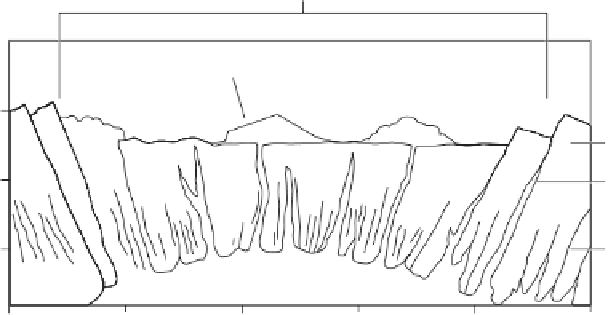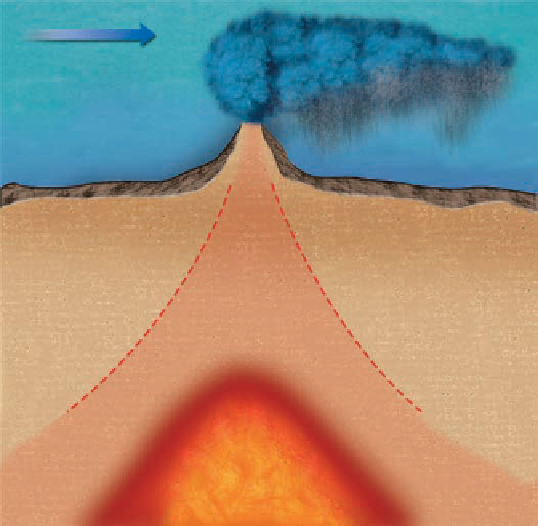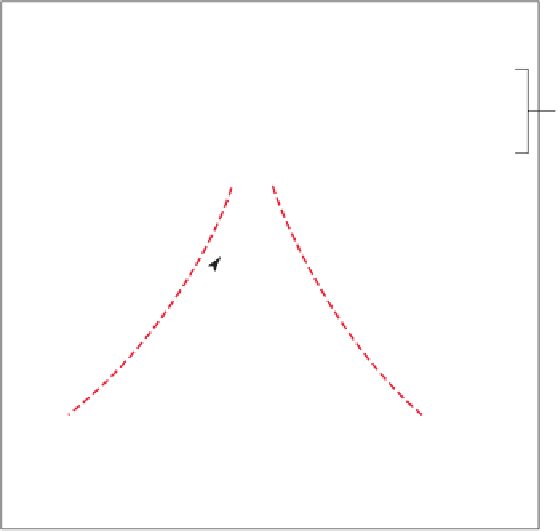Geology Reference
In-Depth Information
◗
Rift
Figure 9.12
Central Rift and
Submarine Hydrothermal Vents
Faults
Pillow lava mound
0
Lava flows
Actively
forming
dike
Sheeted
dikes
a
Cross section of the Mid-Atlantic
Ridge showing its central rift where recent
moundlike accumulations of volcanic
rocks, mostly pillow lava, are found.
1
Magma
0
1
2
Distance (km)
Bottom current
Chimney
Precipitation
FeO(OH) MnO
2
Precipitation
CaSO
4
, FeS
Sedimentation
Seawater seepage
H
2
S in water
Basalt
Basalt
Precipitation
FeS, FeS
2,
CuFeS
2,
350°C
350°C
Magma
b
Cross section showing the origin of a submarine hydrothermal
vent called a black smoker.
organisms depend on bacteria that oxidize sulfur com-
pounds for their ultimate source of nutrients. The vents are
also interesting because of their economic potential. The
heated seawater reacts with oceanic crust, transforming it
into a metal-rich solution that discharges into seawater and
cools, precipitating iron, copper, and zinc sulfi des and other
minerals. A chimney-like vent forms that eventually col-
lapses and forms a mound of sediments rich in the elements
mentioned above.
Apparently, the chimneys through which black smokers
discharge grow rapidly. A 10-m-high chimney accidentally
knocked over in 1991 by the submersible
Alvin
grew to 6 m in
just three months. Also in 1991, scientists aboard
Alvin
saw
the results of a submarine eruption on the East Pacifi c Rise,
which they missed by less than two weeks. Fresh lava and ash
covered the area, as well as the remains of tube worms killed
c
This black smoker on the East Pacifi c Rise is at a depth of
2800 m. The plume of “black smoke” is heated seawater
with dissolved minerals.


































Search WWH ::

Custom Search